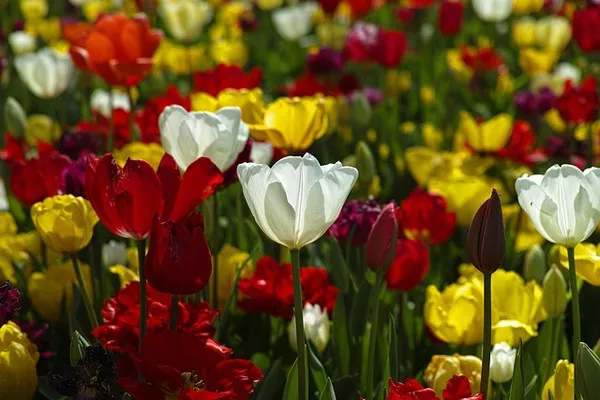Dried flowers possess a timeless charm, encapsulating the essence of nature and enduring beauty. However, without proper care, these delicate botanical treasures can succumb to the passage of time, losing their form and vibrancy. In this comprehensive guide, we will explore effective techniques and tips to ensure your dried flowers remain intact, retaining their aesthetic appeal for years to come.
Understanding the Anatomy of Dried Flowers
Before delving into preservation methods, it’s crucial to understand the composition of dried flowers. Unlike fresh blooms, dried flowers lack the moisture that once supported their vibrant colors and plump petals. As a result, they become more susceptible to brittleness and crumbling. Recognizing this inherent fragility is the first step towards successful preservation.
Selecting the Right Flowers for Drying
Not all flowers dry equally well, and choosing the right varieties can significantly impact the longevity of your dried arrangements. Opt for flowers with sturdy structures and thicker petals, such as roses, lavender, and statice. Delicate blooms like daisies and baby’s breath may require additional care to prevent disintegration.
Proper Harvesting Techniques
The preservation process begins at the moment of harvesting. To maximize the chances of keeping your dried flowers intact, follow these essential harvesting techniques:
1. Choose flowers at their peak: Select blooms that are fully mature but not overly aged. Flowers in their prime have the best chance of retaining their shape during the drying process.
2. Harvest in the morning: Morning harvesting is ideal when the flowers are at their freshest and contain the highest moisture content. This can contribute to better preservation outcomes.
3. Remove excess foliage: Trim excess leaves and stems before drying. This reduces the moisture content and minimizes the risk of mold formation during the drying process.
Drying Methods
Various drying methods exist, each with its advantages and potential drawbacks. Select the method that aligns with the type of flowers you have and the aesthetic you wish to achieve:
1. Air Drying:
Arrange flowers in small bunches and hang them upside down in a dark, well-ventilated space.
Ensure the flowers are not crowded, allowing for proper air circulation.
Patience is key, as air drying may take several weeks.
2. Silica Gel Drying:
Gently bury flowers in silica gel to absorb moisture while maintaining their shape.
This method is quicker than air drying and preserves colors well.
Handle silica gel with care and follow safety guidelines.
3. Microwave Drying:
Ideal for preserving flowers with intricate shapes and delicate petals.
Use a microwave-safe container filled with silica gel and flowers.
Microwave in short intervals, checking regularly to prevent overheating.
4. Pressing:
Suitable for flat flowers like pansies and daisies.
Place flowers between layers of absorbent paper and press in a heavy book.
This method is efficient for creating botanical artwork.
Reinforcing Fragile Petals
Once dried, fragile petals can be fortified with careful handling and a few additional steps:
1. Reinforce with Hairspray:
Lightly spray dried flowers with unscented hairspray to provide a protective coating.
Hold the hairspray at a distance to prevent saturation and discoloration.
2. Wax Coating:
Gently dip or brush melted paraffin wax onto the flowers.
This method adds a subtle shine and reinforces delicate petals.
Display and Storage
Properly displaying and storing dried flowers is crucial for maintaining their structural integrity:
1. Avoid Direct Sunlight:
Display dried flowers away from direct sunlight to prevent color fading and brittleness.
2. Use Glass Cases or Frames:
Encase your dried arrangements in glass cases or frames to protect them from dust and humidity.
3. Maintain Consistent Temperature:
Keep dried flowers in a cool, dry environment to prevent mold growth and preserve their form.
Regular Maintenance and Inspection
Preserving dried flowers is an ongoing process that requires regular attention:
1. Dust Carefully:
Use a soft brush or compressed air to remove dust from dried flowers without causing damage.
2. Inspect for Weakness:
Periodically inspect your dried arrangements for signs of weakness or crumbling.
Reinforce any fragile areas with clear adhesive if necessary.
Reviving and Repurposing
In the event that your dried flowers do show signs of deterioration, don’t despair. Consider these creative ways to revive and repurpose them:
1. Hydrate Gently:
Mist dried flowers with water using a fine spray bottle to add a touch of moisture.
Avoid over-hydrating, as this can lead to mold and accelerated decay.
2. Create Potpourri:
Grind or crush dried flowers to create fragrant potpourri.
Combine with essential oils for a personalized scent.
3. Artistic Collages:
Incorporate dried flowers into artistic collages or shadow boxes for a unique and visually appealing display.
Conclusion
Preserving the beauty of dried flowers requires a combination of careful techniques and ongoing maintenance. By understanding the characteristics of dried blooms, selecting the right flowers, employing appropriate drying methods, and implementing proper display and storage practices, you can enjoy the enduring elegance of your dried flower arrangements for years to come. Embrace the art of preservation and revel in the timeless allure that dried flowers bring to your living spaces.


